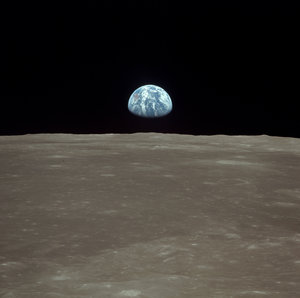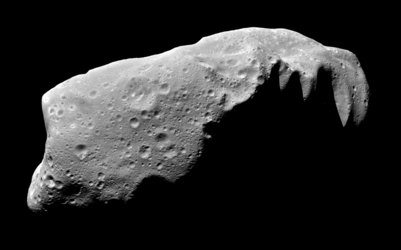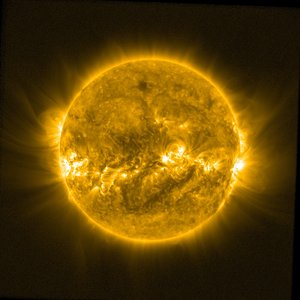Protecting our Pale Blue Dot
Ever since life formed on Earth, it has been exposed to hazards originating in space. They strike with little warning and can overwhelm our planet’s natural defences.
We live close to an active star, in a Solar System filled with ancient and fast-moving space rocks, on a planet that is becoming increasingly surrounded by discarded satellites and their debris.
What does this mean for us on Earth? Technologies advance at a rapid pace and these days there is much we can do about asteroids, space weather and space debris.
ESA’s Space Safety Programme is working to learn more about, mitigate and prevent the impacts of the hazards originating in space to protect our Pale Blue Dot, its inhabitants, and the vital infrastructure on Earth and in space on which we have come to depend.
Defending our planet against asteroids

Asteroids are ancient space rocks left over from the formation of the Solar System. They are thought to have brought complex molecules, and possibly early life, to Earth billions of years ago. Today, as the current inhabitants of the planet, we must learn how to keep ourselves safe from any future impacts.
The good thing about asteroid impacts is that they are the only natural disaster that might be predicted years in advance. Detection and tracking capabilities are key to being able to make useful threat assessments of potentially risky objects.
Timely observations lead to timely warnings, and these allow mitigation of an impact threat. If there is enough time and the asteroid poses a big enough danger, the best option may be to attempt to deflect the asteroid altogether before it hits Earth.
Through ESA’s efforts of detecting and tracking near-Earth objects and developing asteroid deflection skills, Europe is a fundamental contributor to a global planetary defence system.
Learn more about ESA’s planetary defence activities
Predicting the effects of our Sun’s volatile emissions

We live near an active star that at times is prone to outbursts, slinging particles, plasma and radiation our way. Earth’s atmosphere and magnetic field absorb and deflect much of what the Sun throws our way.
Yet the Sun’s activity still has the potential to disrupt and damage vital infrastructure. This includes satellites in space for navigation, telecommunications, banking and more as well as power grids and networks on the ground. In worst case scenarios, damages could run into the hundreds of billions and temporarily derail everyday life.
While we can’t stop space weather, we can learn to predict it. Timely warnings give us a chance to mitigate space weather effects on our infrastructure. It also gives time to find shelter to astronauts who are outside our planet’s protective layers.
ESA closely monitors both the Sun and Earth’s environment to watch for all space weather effects, detecting them as long as possible beforehand and detailing the impact around Earth. Data is combined into space weather forecasting and ‘nowcasting’ services to give all impacted industries accurate and timely information to act.
Learn more about ESA’s space weather activities
Safeguarding the future of spaceflight

The problem of space debris is all too human. Space debris are all non-functional, human-made objects like no longer functioning spacecraft, launchers or fragments of them, in orbit and re-entering Earth's atmosphere. If current behaviours and trends continue, crucial orbital regions will become entirely unusable, with millions of debris pieces already swirling around.
To have a future in space, we must stop adding space debris as well as clean up what’s already there, as orbits get dangerously crowded and the risk of collisions increasing rapidly.
Dealing with the current problem
All debris in Earth orbit – and lunar orbit – needs to be carefully tracked and the more and more congested orbits monitored closely. To stop the problem from spiralling further, collisions must be prevented. Space traffic management and collision avoidance is a fast-growing focus area for ESA to ensure the safe use of space for all.
Learn more about ESA’s activities concerning space debris
Technology development for the future
To reduce the amount of space debris in space and prevent any new debris from coming into existence, ESA is developing many new technologies and the missions to test them in space.
The goal is to develop sustainable satellites that can leave congested orbits by themselves at their end-of-mission. In the long term, we need to actively remove debris and work towards a circular economy in space to safeguard the future of spaceflight for the next generation. From refuelling and repairing to recycling in space:
Learn more about ESA’s activities towards sustainable spaceflight















 Germany
Germany
 Austria
Austria
 Belgium
Belgium
 Denmark
Denmark
 Spain
Spain
 Estonia
Estonia
 Finland
Finland
 France
France
 Greece
Greece
 Hungary
Hungary
 Ireland
Ireland
 Italy
Italy
 Luxembourg
Luxembourg
 Norway
Norway
 The Netherlands
The Netherlands
 Poland
Poland
 Portugal
Portugal
 Czechia
Czechia
 Romania
Romania
 United Kingdom
United Kingdom
 Slovenia
Slovenia
 Sweden
Sweden
 Switzerland
Switzerland
































